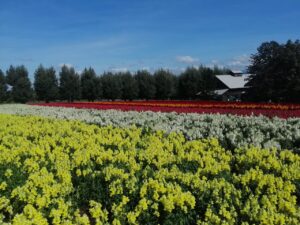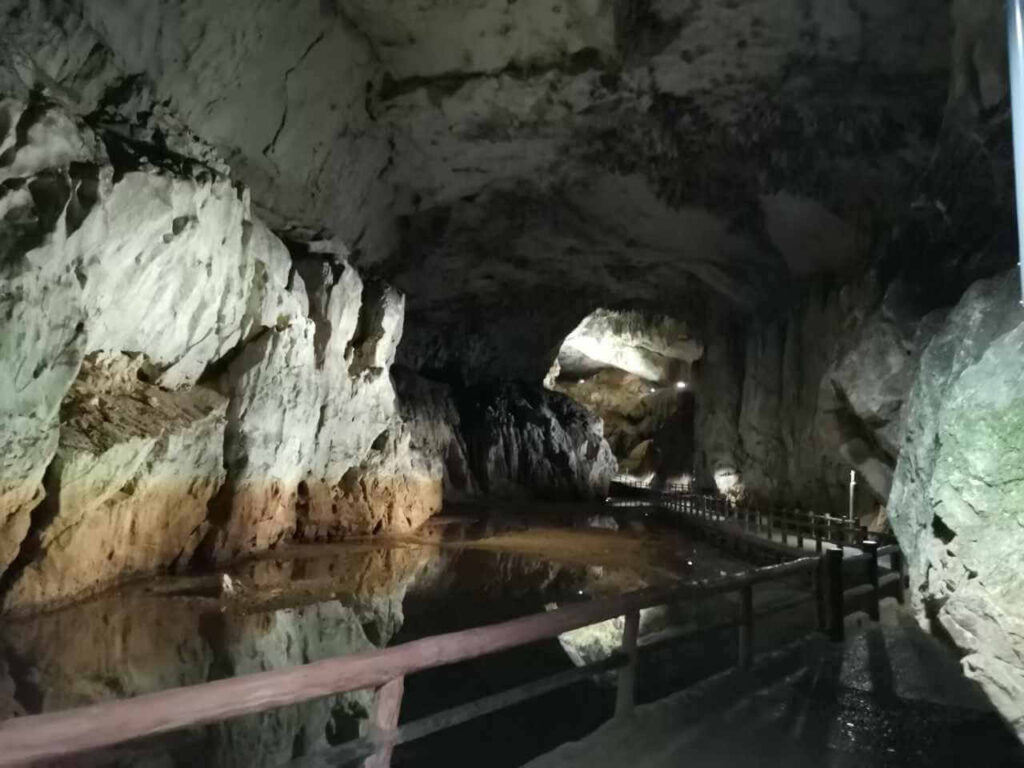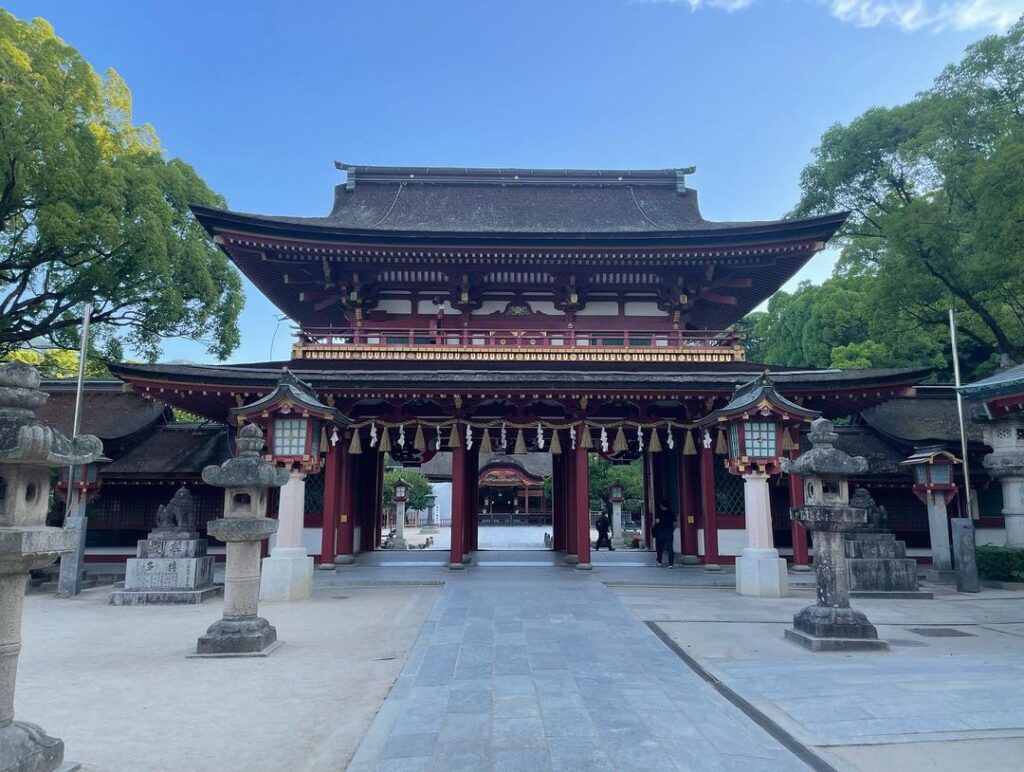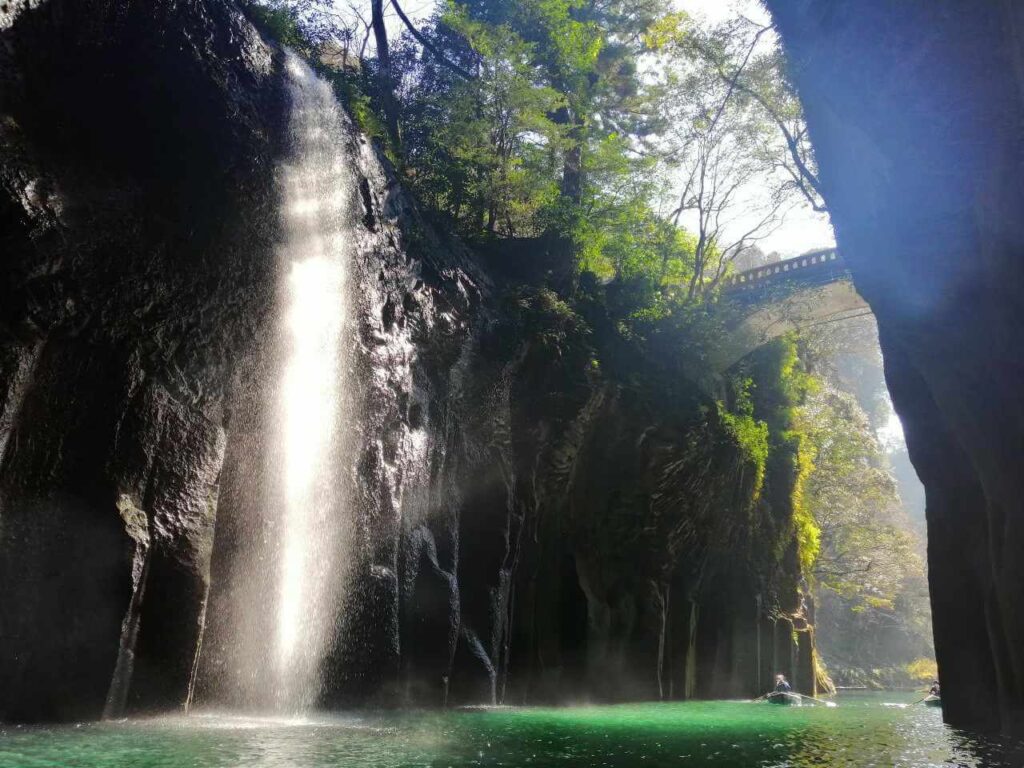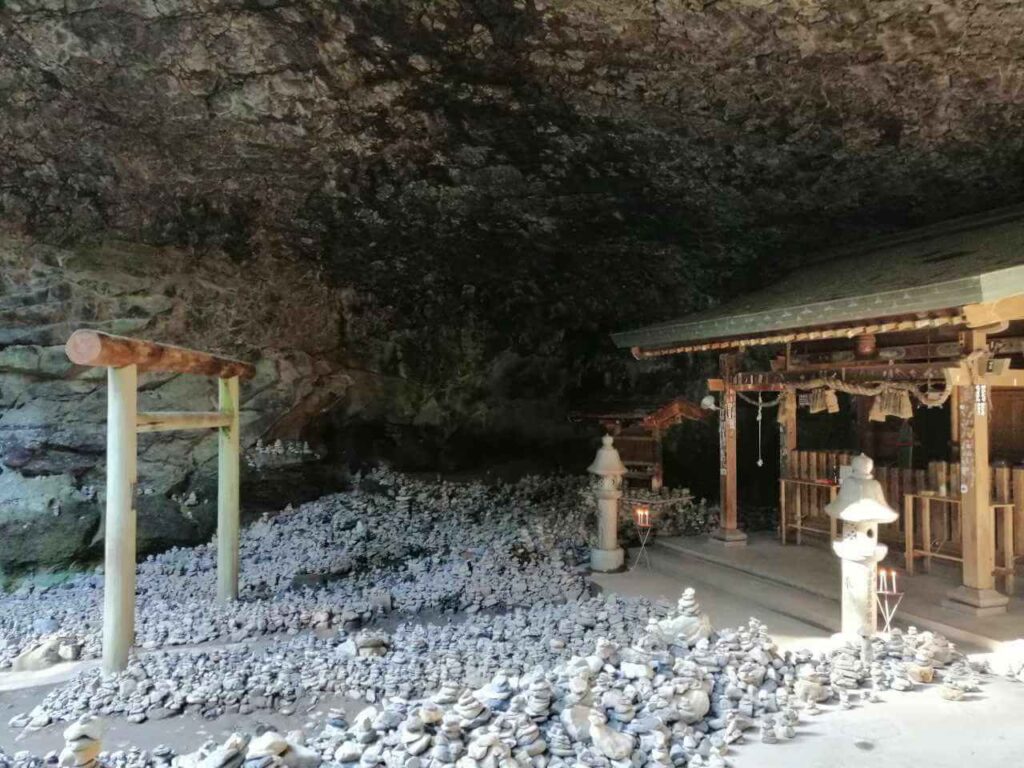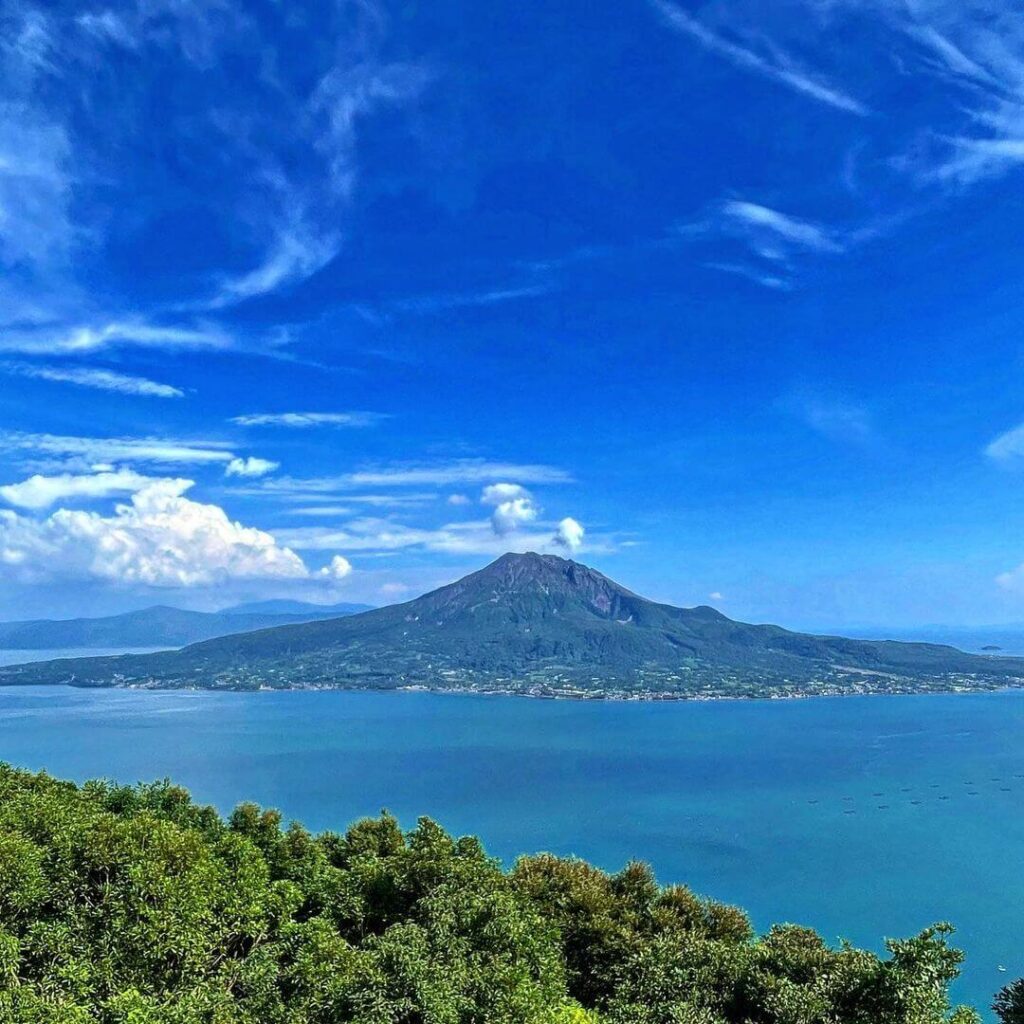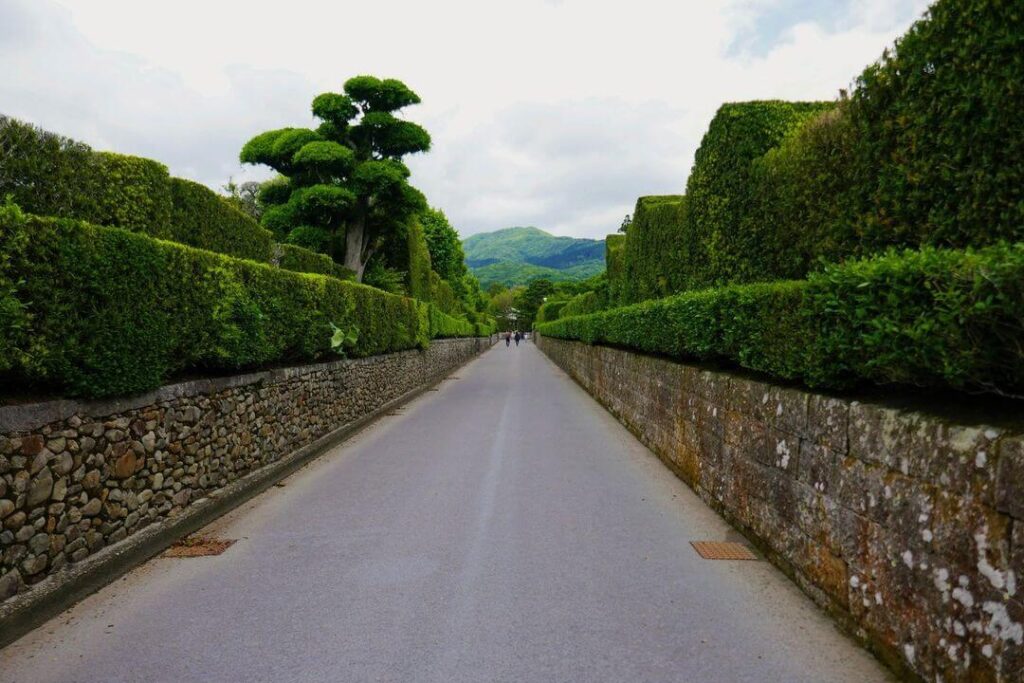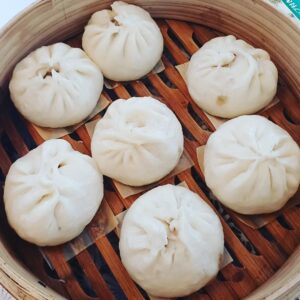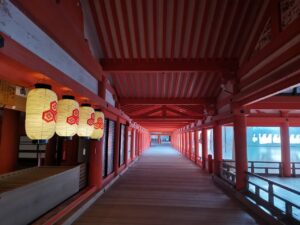Day 1
Commence your Kyoto adventure by visiting the iconic Kiyomizu-dera Temple. Take a bus to Gojozaka and ascend the hill leading to the temple. While it’s a must-see, be prepared for a bit of walking. However, along the way, you’ll encounter various shops offering Kyoto souvenirs and food stalls serving local delicacies to keep you engaged. Upon reaching Kiyomizu-dera Temple, enjoy the stunning view, especially enchanting during the autumn season when the historic hillside architecture harmonizes with fall foliage. During your descent, don’t miss the opportunity to explore Ninnen-zaka and Sannen-zaka, picturesque hills adorned with charming shops that embody Kyoto’s essence. After immersing yourself in Kiyomizu-dera and its surroundings, head to Sanjusangendo Temple, a distinctive attraction housing 1001 statues of Kannon, a sight unlike any other. Nearby, the Kyoto National Museum preserves historical treasures from Kyoto’s era as an imperial capital, offering valuable insights into the city’s rich history. Wrap up your day by taking a bus to Yasaka Temple, renowned for hosting the Gion Matsuri festival. Following this, stroll across the bridge above the Kamogawa River, savoring the view of the serene river lined with restaurants featuring traditional architecture. You can even choose to relax by the riverbank if you’re feeling tired. Then, make your way to Nishiki Market, a lively street boasting an array of offerings, including seafood and Japanese knives, along with regional specialties. It’s a hub of around a hundred restaurants and shops, making it an ideal spot for a meal, although it tends to get crowded. Finally, visit the Fushimi Inari Taisha Shrine, celebrated for its countless bright orange torii gates. To reach it, hop on the Keihan line to Fushimi-Inari station, but be prepared for potentially muddy paths, especially after rain. This shrine is a photographer’s paradise, so make sure to capture its beauty. Return to Kyoto for some well-deserved rest. If you’re seeking dining options, the Gion district offers a plethora of restaurants serving various cuisines. Alternatively, treat yourself to a traditional Kaiseki dinner, consisting of multiple small dishes followed by a main course.
Day 2
Arashiyama and Kinkaku-ji: Embark on your second day with a trip to Arashiyama, a well-known destination famous for its enchanting bamboo forest. To avoid the crowds, arrive early. Arashiyama boasts not only natural beauty, including the Katsuragawa River and the Togetsukyo Bridge, but also souvenir shops selling local delights like Yatsuhashi sweets. Despite its popularity, this area offers a comprehensive experience with traditional souvenirs. Next on your itinerary is Tenryu-ji Temple, another prominent temple in Arashiyama. Consider exploring Atagi Nenbutsu-ji Temple, which features numerous charming statues, each with unique facial expressions. It’s a 40-minute walk or a 15-minute bus ride away, but do check the bus schedule to minimize waiting time. Following this, take a taxi to Ryuan-ji Temple, famous for its iconic rock and pebble garden, a renowned Zen garden. Slightly to the north, you’ll find Kinkaku-ji Temple, often referred to as the “Golden Pavilion.” It’s a 20-minute walk from Ryuan-ji or a 10-minute bus ride, though buses can get crowded during peak tourist seasons. Renowned Japanese writer Yukio Mishima used Kinkaku-ji as a motif in an intriguing story, making it a worthwhile visit. Proceed to Daitoku-ji Temple, known for the Japanese tea ceremony and the presentation of Zen culture, similar to Ryuan-ji. Since these Day 2 destinations are relatively distant from central Kyoto, return there to recharge for the next day.
Day 3
Commence Day 3 in Kyoto with a visit to Ginkaku-ji Temple, often known as the “Silver Pavilion.” Despite not actually being silver, its name derives from the temple’s darker exterior. Despite its simplicity, it’s an essential architectural symbol of the Muromachi period, making it a recommended stop. Following your exploration of Ginkaku-ji, make your way to the Philosopher’s Path (Tetsugaku-no-Michi), a picturesque canal-side path. It’s particularly charming during cherry blossom season. At the path’s conclusion, you’ll encounter Zenrin-ji Temple, also known as Eikando Temple, a beautiful site, especially during autumn. It features a delightful pond and a traditional bridge, offering splendid photo opportunities. A bit further south, you’ll find Nanzen-ji Temple, another appealing temple surrounded by autumn foliage. Nanzen-ji boasts a rock garden akin to Ryuzen-ji Temple. Within its premises, you’ll come across a 19th-century aqueduct that once transported water from Lake Biwa in the neighboring Shiga Prefecture to Kyoto. Upon your return to the city center, consider visiting Heian Shrine, a spacious shrine adorned with a vibrant crimson facade, even though it lacks the historical significance of other locales. Upon reaching the city center, take a leisurely stroll as Kyoto’s charm lies in getting lost amid its beauty.
Day 4 (Optional)
Commence Day 4 with a visit to the renowned Byōdō-in Temple, a UNESCO World Heritage Site celebrated for its elegant Heian-period design. The Phoenix Hall, mirrored in a serene pond, creates an enchanting scene that almost seems otherworldly. While Japan has many grand temples, Byōdō-in stands out due to its unique and grand facade, making it famous and a primary reason for some visitors to Uji. Following this, proceed to the iconic Uji Bridge, offering picturesque views of the Uji River surrounded by lush greenery. Pause for a moment to relish the scenery and capture memorable photos. Next, visit Mimuroto-ji Temple, renowned for its stunning hydrangea displays in early summer. Even during the fall, the temple’s exquisite surroundings make it a worthwhile visit. If time permits, consider exploring Shōzū-in Temple, a lesser-known gem celebrated for its exquisite garden and tranquil ambiance. It features a room with a heart-shaped opening in the wall, providing views of the temple garden, a feature particularly appealing to younger visitors. During the summer, the temple adorns itself with Suzu (Japanese Bells) hanging from the arches, adding to its picturesque allure. Note that reaching Shōzū-in may require a 30-minute taxi ride due to its somewhat remote location. Alternatively, if you prefer a more relaxed afternoon, Uji is renowned for its Matcha culture. Explore one of Uji’s traditional teahouses to partake in the local Matcha experience, savoring a cup of Matcha tea paired with authentic sweets distinct from those in the Western world.
Day 5 (Optional)
Consider a brief excursion to Kibune Shrine and Kurayama for a delightful hiking experience. The hike is relatively gentle and not too distant, with both locations situated in close proximity. However, if you find the city center captivating, it might be more enjoyable to spend your time there, as traveling to Kibune and Kurayama would consume a significant amount of time. If you decide to embark on this optional adventure, begin your day by heading to Kibune Shrine and Kurayama. Kibune Shrine is known for its serene and spiritual ambiance, surrounded by lush greenery. Enjoy a peaceful hike in the Kurayama area, offering scenic views and a chance to connect with nature. The proximity of these locations makes them ideal for a day trip. These optional activities provide a pleasant escape from the city, but if you have a strong affinity for Kyoto’s urban charm, spending more time exploring its streets and hidden gems might be a rewarding alternative.
